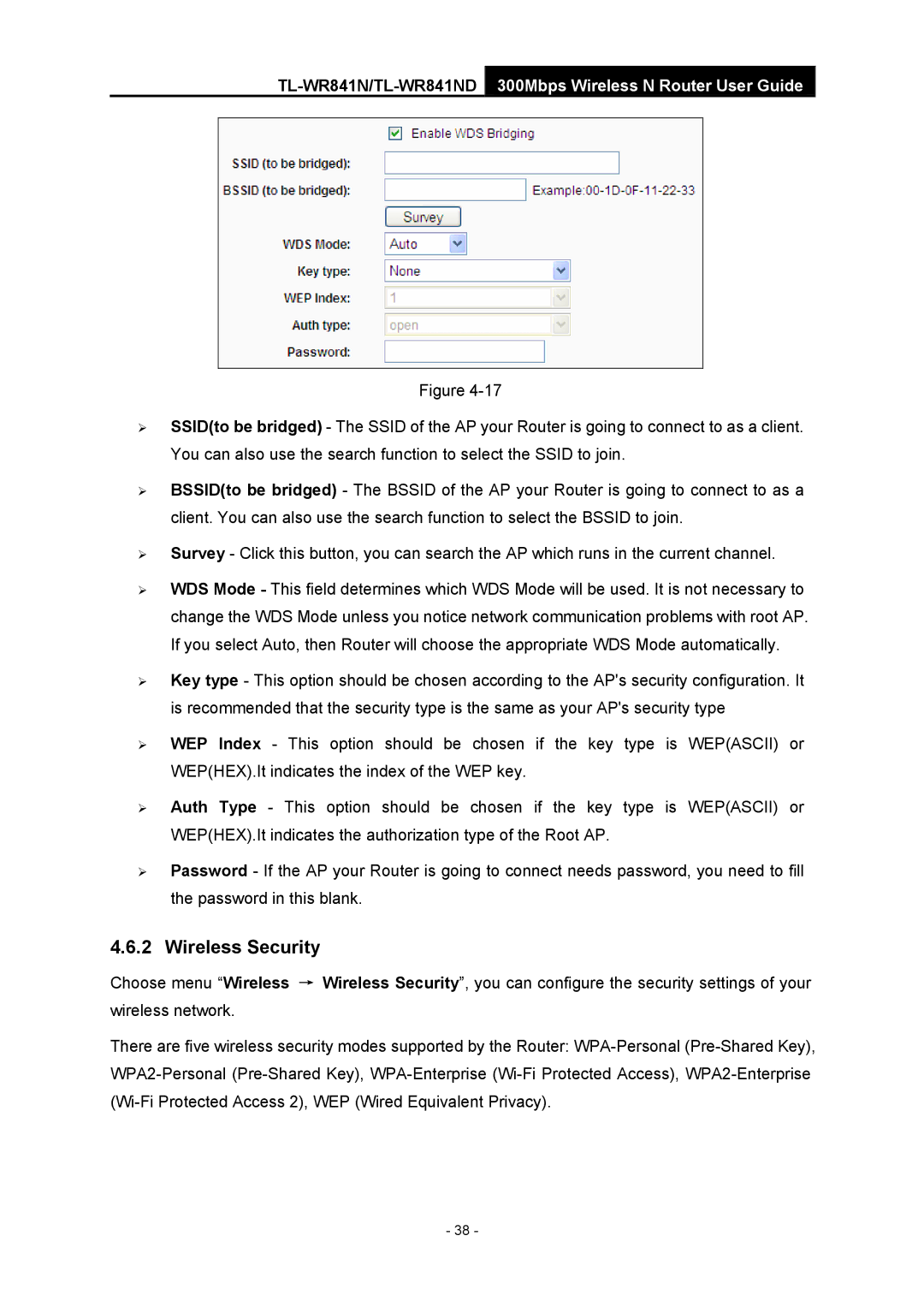
TL-WR841N/TL-WR841ND 300Mbps Wireless N Router User Guide
Figure
¾SSID(to be bridged) - The SSID of the AP your Router is going to connect to as a client. You can also use the search function to select the SSID to join.
¾BSSID(to be bridged) - The BSSID of the AP your Router is going to connect to as a client. You can also use the search function to select the BSSID to join.
¾Survey - Click this button, you can search the AP which runs in the current channel.
¾WDS Mode - This field determines which WDS Mode will be used. It is not necessary to change the WDS Mode unless you notice network communication problems with root AP. If you select Auto, then Router will choose the appropriate WDS Mode automatically.
¾Key type - This option should be chosen according to the AP's security configuration. It is recommended that the security type is the same as your AP's security type
¾WEP Index - This option should be chosen if the key type is WEP(ASCII) or WEP(HEX).It indicates the index of the WEP key.
¾Auth Type - This option should be chosen if the key type is WEP(ASCII) or WEP(HEX).It indicates the authorization type of the Root AP.
¾Password - If the AP your Router is going to connect needs password, you need to fill the password in this blank.
4.6.2 Wireless Security
Choose menu “Wireless → Wireless Security”, you can configure the security settings of your wireless network.
There are five wireless security modes supported by the Router:
- 38 -
